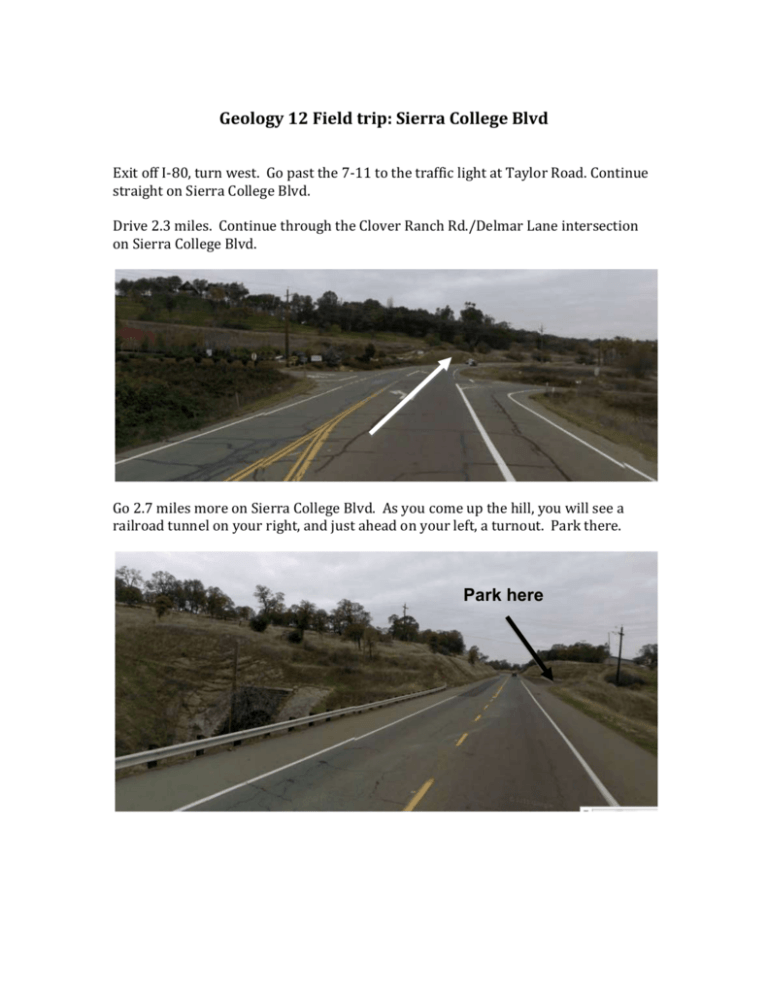Geology 12 Field trip: Sierra College Blvd
advertisement

Geology 12 Field trip: Sierra College Blvd Exit off I-80, turn west. Go past the 7-11 to the traffic light at Taylor Road. Continue straight on Sierra College Blvd. Drive 2.3 miles. Continue through the Clover Ranch Rd./Delmar Lane intersection on Sierra College Blvd. Go 2.7 miles more on Sierra College Blvd. As you come up the hill, you will see a railroad tunnel on your right, and just ahead on your left, a turnout. Park there. Park here CAUTION: traffic moves pretty fast here and there’s not much room between the road and the rocks across the street. Do most of your observation around the edges of the turnout, and be extremely careful crossing the street. Be sure you visit each of these places as you work: In the turnout: o Big boulder on the right in this picture o The layer that the big boulder is in o The layer of hard rock above the boulder Across the street: o Tan-brown rock in gully o Large grey outcrop to the left of the gully There are four kinds of rock in the outcrops on both sides of the road. You are looking for: conglomerate sandstone (hard to find – it’s only in very small layers) volcanic mudflow (looks like breccia or conglomerate where the cobbles are made of gray andesite and the matrix between the cobbles is hard and resists erosion) diorite Find all four rock types. For each rock type, describe these properties: Color of the rock, both fresh and weathered Lithology – rock name and texture, plus a description of the minerals or fragments within the rock Characteristics of bedding, if a sedimentary rock Characteristics of the outcrop (e.g., deeply weathered, resistant, etc.) Rock #1: Rock #2: Rock #3: Rock #4: There are three possibilities for how the diorite came to be in contact with the surrounding rock units: Intrusive contact: The surrounding rock was already there, and magma intruded into the rock, eventually cooling and crystallizing as the diorite. Depositional contact: The granite intruded some unknown rock as magma and crystallized. That unknown rock weathered away in this area, uncovering the diorite. Sedimentary rock was then deposited on top of the diorite. Fault contact: The diorite and the sedimentary rocks formed in different places. A fault then moved the diorite in contact with the sedimentary rocks. If this were an intrusive contact, what evidence would you expect to see? If this were a depositional contact, what would you expect to see? If this were a fault contact, what would you expect to see? Now write a geological history of the rocks in this area, based on the evidence that you observed. Be sure to include all four rock types in your history.








